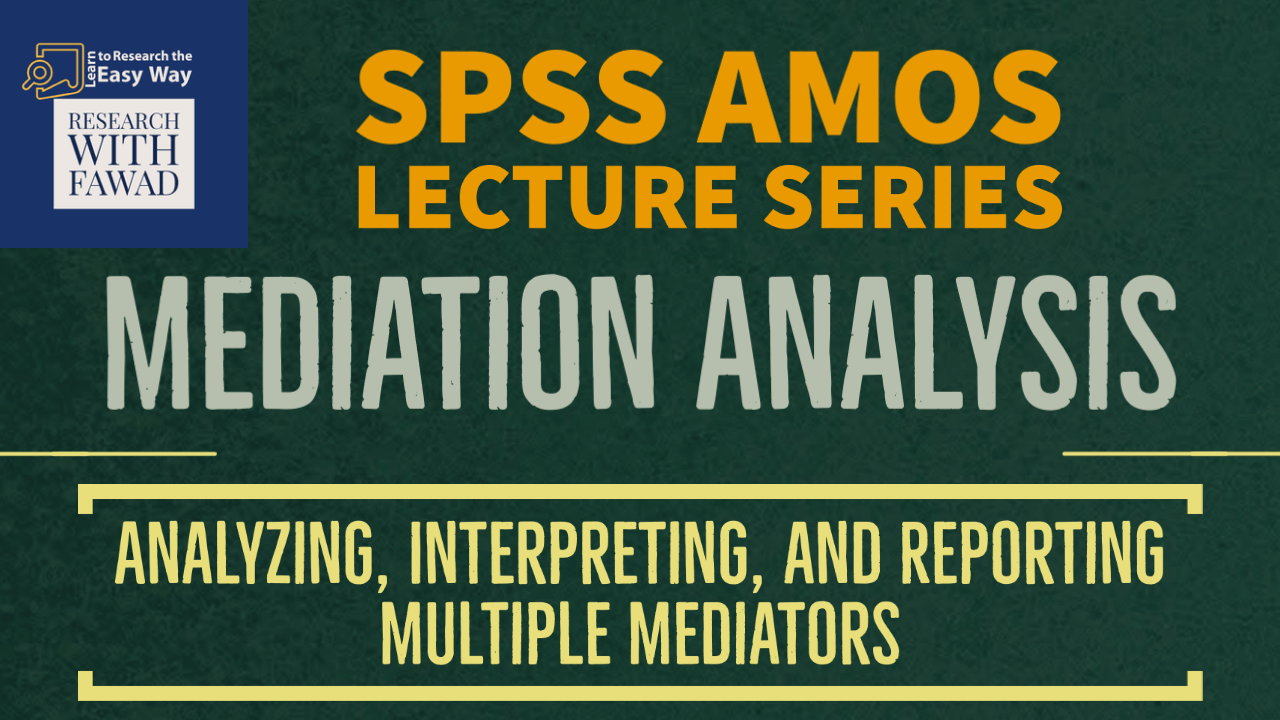
Mediation Analysis with Multiple in SPSS AMOS
The Focus of the video tutorial is guiding how to analyze a model with multiple mediators in SPSS AMOS.

The Focus of the video tutorial is guiding how to analyze a model with multiple mediators in SPSS AMOS.
In the last session, i explained the concept of mediations and tested a simple model with a single mediator. Click here for the last session.
In this example, there are two mediators in the relationship between Organizational Learning and Organizational Performance
In this example I will label the paths as
Once, Labeled, the model will look like the model as shown below
Let’s look at the output to determine if mediation is present.
Next, We can also manually calculate these specific indirect effects.
The indirect effect is the sum of the (a1*b1) and a2*b2.
From the aforementioned table, take Estimate and take Standard Error from the following table
Mediation Analysis
The study assessed the mediating role of Collaborative Culture (CC) and Organizational Commitment (OC) on the relationship between Organizational Learning (OL) and Organizational Performance (OP). The results revealed an insignificant indirect effect of OL on OP through CC (b= 0.040, t = 0.666, p = .412), not supporting H1. Analyzing the mediating role of OC, the study found a significant mediating role of OC on the linkage between OL and OP (b – 0.210, t = 3.684, p = 0.004), supporting H2. Furthermore, the direct effect of OL on OP in presence of the mediators was also found significant (b = 0.373, p = 0.000). Hence, OC partially mediated the relationship between OL and OP. Mediation analysis summary is presented in Table 1.